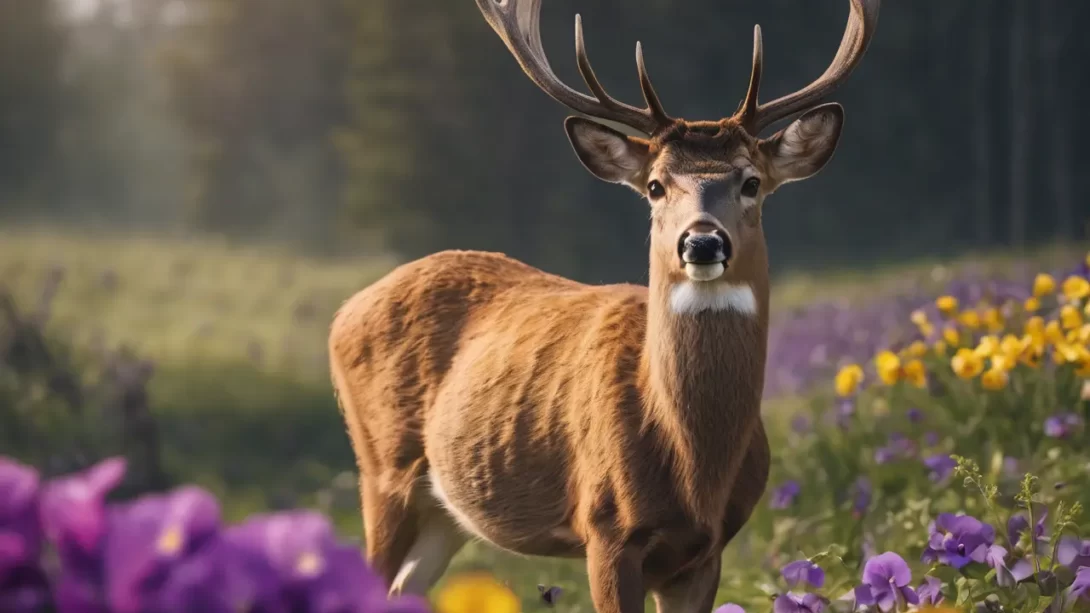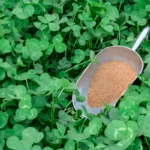Pansies, with their vibrant colors and heartwarming appearance, are a favorite among gardeners for adding splashes of color to gardens, especially in cooler seasons. However, those living in areas frequented by deer may face the challenge of protecting these delightful flowers from wildlife. A common concern is whether deer are attracted to and likely to eat pansies, potentially jeopardizing the beauty of a well-maintained garden.
Deer Dietary Habits
Deer are versatile in their feeding habits and are known to browse on a wide range of plants. Their diet primarily consists of leaves, twigs, fruits, and flowers, varying with the availability of food sources across seasons. In residential areas or gardens, deer often explore and feed on a variety of ornamental plants, driven by curiosity and the search for nutrition. The vulnerability of certain plants to deer depends on several factors, including the plant’s taste, texture, and the presence of other food sources.
Pansies and Their Appeal to Deer
Pansies are known for their distinctive, velvety petals and wide range of colors. They are primarily cool-weather flowers, often planted in the fall or early spring. This timing can coincide with periods when deer are actively seeking out new and varied food sources. Pansies might be appealing to deer due to their soft texture and potentially nutrient-rich petals. However, whether pansies are a preferred choice or a fallback option when other food sources are scarce is a topic worth exploring.
Evidence of Deer Eating Pansies
Gardeners in deer-populated areas often share anecdotal evidence of deer feeding on pansies. While deer typically prefer other plants, pansies are not immune to their browsing, especially in times when food is scarce. In the absence of their preferred foods like tender shoots, buds, and young leaves, deer may turn to available flowers, including pansies. Research and wildlife observations suggest that while pansies are not at the top of the list for deer, they are certainly not at the bottom either.
Protecting Pansies from Deer
Preserving the beauty of pansies in a deer-prone area requires implementing effective deterrent strategies. Here are some methods gardeners can use:
- Physical Barriers: Fencing is one of the most reliable ways to protect pansies from deer. A fence should be tall enough (at least 6-8 feet) to prevent deer from jumping over it.
- Commercial Repellents: Various deer repellents available in the market can be applied around pansies. These products often use a scent or taste that is unpleasant to deer. It’s important to follow the manufacturer’s instructions for effective use.
- Natural Repellents: Home remedies, such as using soap bars, human hair, or garlic spray, can also deter deer. These may need frequent reapplication to maintain their effectiveness.
- Planting Deer-Resistant Plants: Surrounding pansies with plants that deer find unattractive can reduce the likelihood of them browsing on the pansies. Plants like lavender, sage, and marigolds can act as natural repellents.
Alternatives to Pansies in Deer-Prone Areas
In areas where deer presence is a significant problem, considering deer-resistant plants as alternatives to pansies might be a practical solution. Plants that are known to be less appealing to deer due to their strong scents, textures, or flavors can be a safer choice for gardeners.
Alternatives to Pansies in Deer-Prone Areas
For gardeners facing persistent deer problems, choosing plants that are naturally less appealing to deer might be the best course of action. Some deer-resistant alternatives to pansies include:
- Snapdragons: With a similar burst of color, snapdragons are less likely to be eaten by deer.
- Foxgloves: Known for their beautiful bell-shaped flowers, foxgloves are generally avoided by deer.
- Marigolds: Their strong scent makes marigolds a good choice for keeping deer at bay.
- Daffodils: Deer tend to avoid daffodils, making them a safe bet for spring blooms.
- Lavender: The strong fragrance of lavender is a natural deterrent for deer.
When selecting plants, it’s also crucial to consider the overall ecological balance of your garden. Native plants are often a good choice as they are adapted to local conditions and support native wildlife.
Conclusion
While pansies are not the most preferred food for deer, they are not entirely deer-proof either. In areas with significant deer populations, pansies can fall victim to deer, especially when other food sources are scarce. Employing strategies like physical barriers, repellents, and planting deer-resistant companion plants can significantly reduce the risk of deer damage.
For those in heavily deer-populated areas, choosing less palatable alternatives to pansies or incorporating a mix of deer-resistant plants can help maintain a beautiful garden without the worry of deer browsing. Understanding and adapting to local wildlife habits is key to successful gardening in harmony with nature. By taking these proactive steps, gardeners can enjoy a vibrant and thriving garden, even in the presence of deer.




